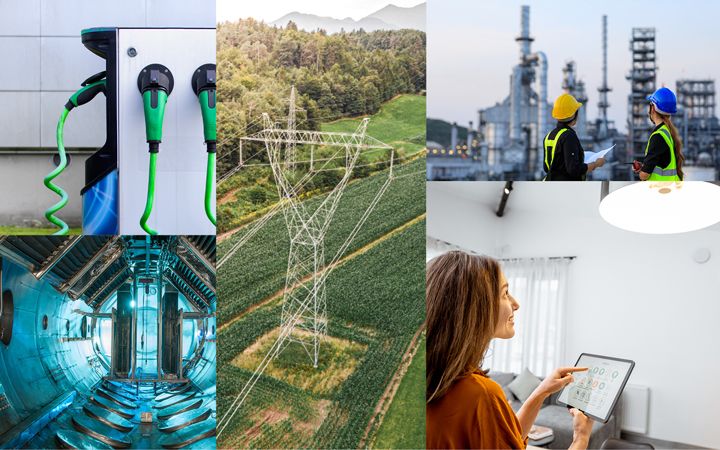
Washington State Department of Commerce conducts an EV infrastructure assessment
To prepare for a future with over 3 million EV charging ports, we partnered with the Washington State Department of Commerce to conduct a utility-side infrastructure assessment. By modeling charging scenarios and analyzing utility circuit data, we delivered a strategic roadmap that guides infrastructure investments while promoting access and cost-effectiveness.
Challenge

The Washington State Department of Commerce needed to understand how the state’s electric grid would be impacted by the projected rise in EV adoption, including over 3 million charging ports by 2035. They were challenged with estimating infrastructure costs, identifying grid limitations, and ensuring equitable ratepayer investment as the state moves toward 100% zero-emission vehicle (ZEV) sales. The stakes were high: balancing rapid electrification with economic feasibility across a complex, statewide energy landscape.
- Python
- ArcGIS
- CYME
- Windmil
- Synergi
Solution
We provided a comprehensive, data-rich infrastructure assessment by:
- Modeling over 1,200 utility circuits from five major utilities covering nearly half of Washington’s population.
- Simulating three charging scenarios—Nameplate (maximum demand), Distributed (usage-based), and Managed (optimized off-peak)—to forecast future peak loads and infrastructure demand.
- Estimating costs using utility data and industry benchmarks to project capital and operational upgrades through 2035 and 2050.
- Integrating equity and policy recommendations, helping minimize financial burdens and promoting inclusive electrification.
Using Python, ArcGIS, CYME, Windmil, and Synergi, we built custom modeling tools and visualizations to quantify infrastructure upgrades and inform strategic planning.
Results
Washington state now has a clear, data-informed roadmap to guide its electrification and grid modernization strategy. Our assessment revealed that infrastructure costs varied significantly depending on the assumptions utilities make and the policies they implement to affect charging behavior—ranging from $25 billion under the high-demand Nameplate scenario to $17.3 billion with Managed charging. By shifting charging to off-peak hours, the state could save over $8 billion, cutting costs by 30%.
To meet projected energy demand, the electric grid will require:
- A 4–7 GW increase in distribution system capacity
- As many as 841 new utility circuits and 263 substation transformers under the most intensive scenario
We also identified major risks to current infrastructure: 67% of existing circuits could become overloaded under the Nameplate scenario, compared to 52% with Managed charging—highlighting the value of strategic load management. These insights are now shaping Washington’s investment priorities and transportation electrification planning, ensuring the state avoids unnecessary upgrades while promoting equity and long-term grid resilience.
$8B
4-7 GW
1,200+
"We are deeply grateful for the comprehensive insights provided by ICF in this study. The findings highlight the significant challenges and necessary upgrades to our electricity grid to support the growing number of electric vehicles. This knowledge excites us as we work to better equip utilities and agencies to prepare for the increased demand, ensuring a resilient and efficient grid for Washington state."
Related client stories
Related industry and services